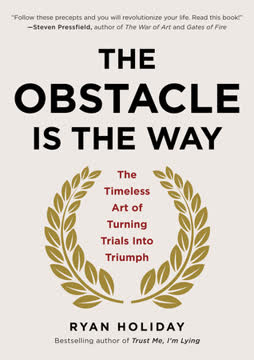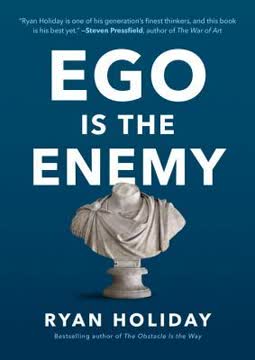重点摘要
1. 抵抗是创造力和个人成长的敌人
抵抗是地球上最有毒的力量。它是比贫穷、疾病和勃起功能障碍更让人不幸福的根源。
抵抗的定义: 抵抗是一种无形的、内在的力量,它反对创造性和个人成长的努力。它表现为:
- 拖延
- 自我怀疑
- 恐惧
- 合理化
- 成瘾
- 自我破坏
克服抵抗: 为了对抗抵抗:
- 认识到它是一种普遍的力量,而不是个人的失败
- 理解项目越重要,抵抗就越强
- 每天都要承诺出现并完成工作,不论感觉如何
- 专注于过程,而不是结果
2. 成为专业人士是克服抵抗的关键
艺术家成为专业人士的那一刻,就像他第一个孩子出生一样具有划时代的意义。一瞬间,一切都改变了。
专业人士的特征:
- 每天都出现,不论发生什么
- 承诺长期努力
- 接受劳动报酬
- 不过度认同工作
- 掌握工艺技巧
- 对工作有幽默感
业余爱好者 vs. 专业人士: 业余爱好者让抵抗打败他们,而专业人士则克服它。专业人士明白恐惧和自我怀疑是过程的一部分,而不是放弃的理由。他们专注于持续的行动,而不是等待灵感或完美的条件。
3. 恐惧是重要性的标志,必须面对
你被恐惧瘫痪了吗?那是个好兆头。恐惧是好的。像自我怀疑一样,恐惧是一个指示器。恐惧告诉我们我们必须做什么。
理解恐惧: 恐惧通常表明:
- 项目或目标的重要性
- 成长和学习的机会
- 重大变化或影响的潜力
面对恐惧: 为了克服恐惧:
- 认识到它是创造过程的自然部分
- 用它作为指南针,引导你走向重要的工作
- 尽管感到害怕,仍然采取行动
- 理解勇气不是没有恐惧,而是在恐惧面前采取行动
4. 专业精神需要纪律、承诺和耐心
专业人士已经学会了更好的方法。他尊重抵抗。他知道如果今天屈服了,不论借口多么合理,明天屈服的可能性会加倍。
培养专业精神:
- 建立一致的工作习惯
- 在工作和个人生活之间设定明确的界限
- 专注于长期目标,而不是短期满足
- 培养耐心和坚持
- 不断提高技能和知识
专业精神的好处:
- 提高生产力
- 在面对挫折时更具韧性
- 改善工作质量
- 提升声誉和可信度
5. 真我是真正的使命和命运
我们在这一生中的任务不是把自己塑造成我们想象中的理想,而是发现我们已经是谁并成为它。
发现真我:
- 反思童年的兴趣和自然倾向
- 注意带来快乐和流动的活动
- 考虑如果金钱不是问题,你会做什么
- 确定核心价值观和信念
真实生活:
- 将职业和生活选择与真实的自我对齐
- 抵制社会压力,不要迎合他人的期望
- 拥抱你的独特才能和视角
- 不断完善和表达你的真实声音
6. 灵感来自更高的领域或无意识的心灵
当我们每天坐下来工作时,力量会集中在我们周围。缪斯注意到了我们的奉献。她赞同。我们在她的眼中赢得了青睐。
灵感的来源:
- 无意识的心灵
- 更高的精神领域
- 集体人类意识
- 个人经历和记忆
培养灵感:
- 建立一致的创造性实践
- 为独处和反思创造空间
- 接触多样的思想和经历
- 信任创造过程,即使灵感似乎难以捉摸
7. 自我,而非自我,是创造力和成长的源泉
自我希望创造,进化。自我喜欢现状。
自我 vs. 自我:
- 自我:与神圣相连,寻求成长和进化
- 自我:专注于物质存在,抵制变化
接触自我:
- 练习冥想或正念
- 参与创造性活动
- 寻求扩展意识的体验
- 培养自我意识和内省
8. 成功往往意味着离开舒适区和部落包容
我们害怕发现我们比我们想象的更强大。比我们的父母/孩子/老师认为的更强大。我们害怕我们实际上拥有我们内心小声音告诉我们的才能。
拥抱成长:
- 认识到个人进化可能会疏远一些人
- 愿意超越旧的身份和关系
- 寻找支持你成长的新社区
- 相信真实的联系会取代失去的联系
克服成功的恐惧:
- 承认离开熟悉领域的恐惧
- 认识到成长通常需要不适
- 专注于成功的潜在好处
- 建立一个鼓励你进化的支持系统
9. 艺术家必须专注于他们的工艺并揭开创造过程的神秘面纱
专业人士将她的工作视为工艺,而不是艺术。不是因为她认为艺术没有神秘的维度。恰恰相反。她明白所有的创造性努力都是神圣的,但她不沉迷于此。
揭开创造力的神秘面纱:
- 专注于发展技术技能
- 建立一致的工作习惯
- 将项目分解为可管理的任务
- 学习你所在领域成功艺术家的技巧
平衡工艺和灵感:
- 尊重创造力的神秘方面
- 为纪律严明的工作和自发的灵感留出空间
- 认识到工艺的掌握增强了创造自由
- 相信持续的努力会带来突破
10. 召唤缪斯可以帮助创造性工作
你曾经在圣达菲待过吗?那里有一个“治愈”的亚文化。这个想法是那里的氛围中有某种治疗作用。一个安全的地方,可以让你重新振作起来。
缪斯的概念:
- 灵感和创造力的拟人化
- 与更高领域或集体无意识的联系
- 外化和尊重创造过程的一种方式
召唤缪斯:
- 发展一个开始创造性工作的个人仪式
- 为你的艺术创造一个专用空间
- 使用冥想或可视化来连接灵感
- 培养对想法的开放和接受态度
最后更新日期:
FAQ
What's "The War of Art" about?
- Author's Focus: "The War of Art" by Steven Pressfield is about overcoming the internal barriers that prevent creative individuals from achieving their goals.
- Central Theme: The book identifies "Resistance" as the primary enemy of creativity, which manifests as procrastination, self-doubt, and fear.
- Structure: It is divided into three parts: "Defining the Enemy," "Combating Resistance," and "Beyond Resistance," each offering insights and strategies to conquer creative blocks.
- Purpose: The book aims to inspire and guide artists, writers, and entrepreneurs to push through their internal struggles and realize their creative potential.
Why should I read "The War of Art"?
- Practical Advice: It provides actionable strategies for overcoming procrastination and self-doubt, common issues faced by creatives.
- Inspiration: The book is motivational, encouraging readers to pursue their true calling and not succumb to fear or societal pressures.
- Insightful Concepts: It introduces the concept of "Resistance" as a universal force that hinders creativity, offering a new perspective on personal struggles.
- Empowerment: Reading it can empower you to take control of your creative process and commit to your work with a professional mindset.
What are the key takeaways of "The War of Art"?
- Resistance as the Enemy: Recognize that Resistance is a natural force that opposes creative endeavors and must be confronted daily.
- Turning Pro: Adopt a professional attitude towards your creative work, showing up consistently and treating it with seriousness and dedication.
- Inspiration and the Muse: Understand that inspiration often comes after you start working, not before, and that invoking the Muse can help in the creative process.
- Territorial vs. Hierarchical Thinking: Focus on your work for its own sake (territorial) rather than for external validation (hierarchical).
How does Steven Pressfield define "Resistance"?
- Universal Force: Resistance is described as a destructive force within human nature that opposes any act that might lead to personal growth or creativity.
- Manifestations: It can appear as procrastination, self-doubt, fear, rationalization, and other forms of self-sabotage.
- Internal Origin: Resistance is self-generated and arises from within, often disguised as legitimate reasons not to pursue creative work.
- Impersonal Nature: It is not out to get you personally; it is a natural force that acts objectively, like gravity.
What is the "Turning Pro" concept in "The War of Art"?
- Professional Mindset: Turning Pro means adopting a professional attitude towards your creative work, treating it as a vocation rather than a hobby.
- Commitment: It involves showing up every day, regardless of circumstances, and dedicating yourself fully to your craft.
- Discipline and Routine: Professionals work through fear and Resistance by establishing routines and maintaining discipline.
- Focus on Mastery: The professional focuses on mastering the craft, understanding that success is a by-product of consistent effort.
What role does "Inspiration" play in "The War of Art"?
- Result of Work: Inspiration is seen as a result of consistent work rather than a prerequisite for starting.
- Invocation of the Muse: Pressfield suggests invoking the Muse, a metaphor for divine inspiration, to aid in the creative process.
- Concentration of Power: When you sit down to work, power concentrates around you, attracting ideas and insights.
- Higher Realm: Inspiration is linked to a higher realm, suggesting that creativity is a divine or spiritual process.
How does "The War of Art" address procrastination?
- Common Manifestation: Procrastination is identified as the most common form of Resistance, often rationalized as harmless.
- Habitual Nature: It can become a habit, leading to a lifetime of unfulfilled potential and regret.
- Immediate Action: The book emphasizes the power of starting immediately, as every moment holds the potential to change your life.
- Overcoming Procrastination: The key is to recognize it as Resistance and to act in spite of it, committing to your work daily.
What are the best quotes from "The War of Art" and what do they mean?
- "Resistance is the most toxic force on the planet." This highlights the destructive power of Resistance in preventing individuals from achieving their potential.
- "The more important a call or action is to our soul’s evolution, the more Resistance we will feel toward pursuing it." This suggests that the level of Resistance is directly proportional to the importance of the task.
- "The professional loves it so much he dedicates his life to it." This emphasizes the commitment and dedication required to overcome Resistance and succeed in creative endeavors.
- "When we sit down each day and do our work, power concentrates around us." This illustrates the idea that consistent effort attracts inspiration and creative energy.
How does "The War of Art" differentiate between "Territory" and "Hierarchy"?
- Territorial Orientation: Working territorially means focusing on your work for its own sake, deriving satisfaction from the act itself.
- Hierarchical Orientation: Working hierarchically involves seeking external validation and defining success by others' opinions.
- Sustenance from Territory: A territory provides sustenance and fulfillment without external input, while hierarchy can lead to insecurity and dependence on others.
- Creative Focus: The book advocates for a territorial approach, encouraging artists to concentrate on their craft rather than external recognition.
What is the significance of "The Higher Realm" in "The War of Art"?
- Source of Inspiration: The Higher Realm is where inspiration and creativity originate, a place beyond the material world.
- Divine Assistance: Pressfield suggests that unseen forces, like muses or angels, support and sustain creative efforts.
- Connection to the Self: The Higher Realm is linked to the Self, the part of us that is connected to the divine and seeks to create.
- Spiritual Dimension: Creativity is portrayed as a spiritual journey, with the Higher Realm providing guidance and insight.
How does "The War of Art" suggest dealing with fear?
- Fear as an Indicator: Fear is seen as a sign of what we must do, indicating the importance of the task to our soul's growth.
- Direct Proportion: The more fear we feel, the more significant the task is to our personal evolution.
- Acting Despite Fear: The book encourages acting in the face of fear, understanding that it is a natural part of the creative process.
- Fear of Success: It also addresses the fear of success, which can be as paralyzing as the fear of failure, urging readers to embrace their potential.
What is the role of "Self" and "Ego" in "The War of Art"?
- Ego's Beliefs: The Ego is concerned with material existence, self-preservation, and external validation, often hindering creative efforts.
- Self's Connection: The Self is connected to the divine, seeking growth, creativity, and unity with others.
- Conflict: The Ego and the Self are in constant conflict, with the Ego producing Resistance to maintain the status quo.
- Creative Alignment: Aligning with the Self allows for true creative expression, as it is the source of inspiration and authenticity.
评论
《艺术之战》评价褒贬不一。一些人称赞它是克服创作障碍的动力源泉,提供了关于纪律和专业精神的实用建议。另一些人则批评其内容重复、论点缺乏依据,甚至可能提供有害的建议。许多人认为前两部分内容深刻,但不喜欢第三部分的精神性内容。读者欣赏普雷斯菲尔德的坦率和简洁的写作风格,尽管有些人觉得他的语气带有评判性。尽管存在争议,这本书关于克服“阻力”的核心信息仍然引起了许多创作者的共鸣。













